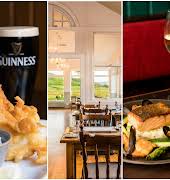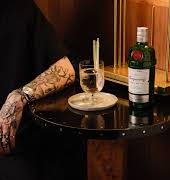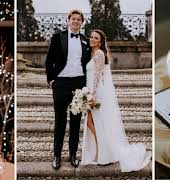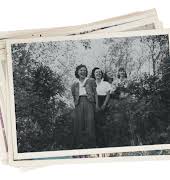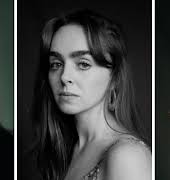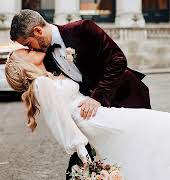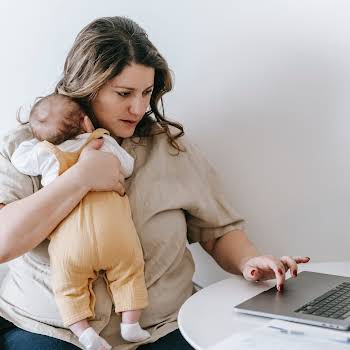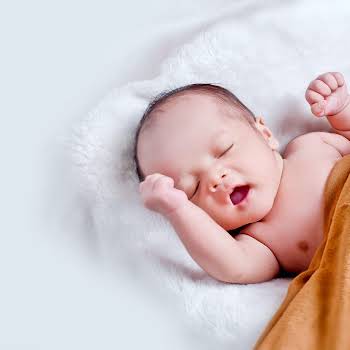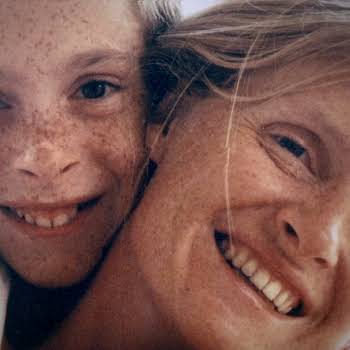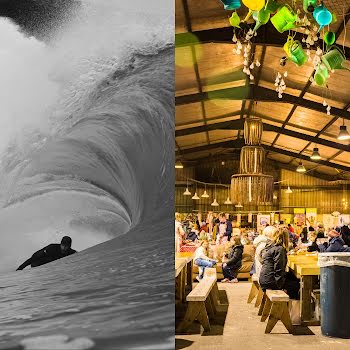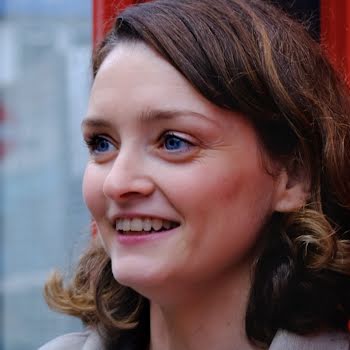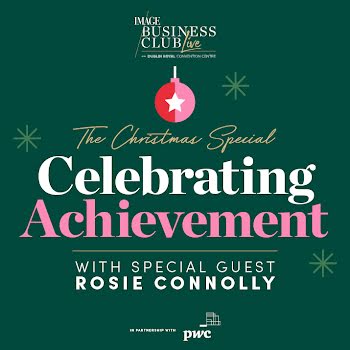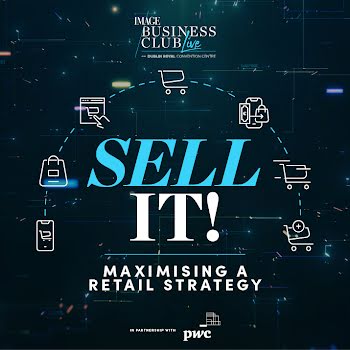By Meg Walker
04th Jun 2019
04th Jun 2019
Irish-born, New York-based filmmaker Jenny McQuaile talks about her first feature documentary, Straight/Curve: Redefining Body Image, which aims to change the narrative around what’s beautiful.
How did you first get involved in the project Straight/Curve: Redefining Body Image, and what challenges did you face getting it to completion?
Straight/Curve: Redefining Body Image is my first feature documentary. I started developing the film around five years ago. The issues of women’s bodies and representation have always interested me. We portray this very narrow standard of beauty in media, TV, advertising, magazines and on the fashion runways, and it is causing generations of women to hate their bodies and constantly be trying to achieve something that is not realistic. We show thin, white women as the “ideal”.
This strive for “perfection” is toxic and dangerous, and industries are profiting off women’s insecurities. I wanted to explore all of this in a documentary. Once I started diving deeper, it became very apparent to me that this story of society’s beauty standards and the lack of representation for women of larger sizes, different colours and ages had to be told through the lens of the fashion industry and media.
I believe for true and lasting change to happen, it has to happen deep within the fashion industry and be reflected in the media, so it can impact society at large. I enlisted the help of one of my producers, Jess Lewis, who has worked in the fashion industry for over 15 years. She helped open doors so we could tell the true story.

The fashion industry opened its arms to us and we were very fortunate to be at the forefront of the new move towards inclusivity and diversity that has been happening. We were filming as designers started to make clothes for larger women, we were filming as plus size models like Ashley Graham and Iskra Lawrence’s stars started to rise. And we were watching beauty brands start to use models of different races for the first time to sell make-up. Money is always the main challenge facing any filmmaker.
I was very lucky to secure funding to get the film off the ground and then EPIX in the US bought the film as we were in the editing process, and that helped us get it finished and broadcast on TV. My story is unique in some ways, and a lot of filmmakers are not that lucky, but I persevered through the tougher moments because I truly felt this story had to be told.
What did you learn from this project that you didn’t anticipate?
One of the most meaningful and surprising aspects of the filmmaking process was talking to the young teenage girls. I couldn’t believe how open and honest they were with me about their struggles. I spent that day crying in between interviews, as it was so tough to hear them say they feel “disgusting” and “less than” because of the images of girls and women they see in the media. They believe because they don’t look like the girl in an ad campaign for their favourite clothes that they aren’t good enough. This is dangerous messaging we are sending to our next generation, and it absolutely has to end. The teenage girls were my driving force to get this film made and out into the world.
We need to start realising the cumulative effects of the imagery we feature in magazines, in ad campaigns, the women we choose to play characters on TV and in films, and the women designers are choosing to walk down the runway. If we continue to see only one type of woman on our screens every single day, then of course we are going to feel crap about ourselves if we can’t look like that too. We need to be empowering girls and women to feel like they can achieve anything they set their minds to – no matter what they look like.
The shame and stigma attached to larger women is very real. In the US, there is this belief that the worst possible thing that could happen to you is to be ‘fat’
Another big takeaway for me is the conversation around health and size. The idea that plus size models promote obesity is so toxic and just plain wrong. We cannot judge a person’s health by just looking at their body, and it’s none of our business anyway unless we are that person’s doctor. Why do we feign concern over a person’s health if they appear “overweight”, but we don’t care if someone is so thin they may die of health-related issues on that end of the spectrum? It’s completely hypocritical, and this is implicit bias at its core.
The shame and stigma attached to larger women is very real. In the US, there is this belief that the worst possible thing that could happen to you is to be “fat”. This notion is crazy to me and is fuelling our eating disorder crisis and a lot of body image issues. If we could eliminate the shame and stigma and show women of different body sizes in media and fashion, then women would start to feel a little more represented, a little less alone, and a little more encouraged to live their best life – whatever that means for them.
Tess Holliday is one of the models in our film, and at a US size 26, she talks about how society tells her she is not allowed to be happy and to be loved, and this is not okay. Who are we to decide who gets to be loved in this world simply because of how people look?
Straight/Curve is now finally coming to Ireland – what are you hoping Irish viewers will take from this film?
I say this all the time, but I really believe this is a film for anybody who has ever looked in the mirror and felt like they are not good enough. This struggle is something I think we, as women, share across the globe. The reasons can be different in different cultures, but that feeling is the same. I did not have role models to look up to who looked like me when I was growing up in Ireland. I always had a big butt and thick thighs and boobs, and that wasn’t really the “norm”.
The idea of thinness being the ultimate goal definitely affects girls and women in Ireland right now, just as it did when I was growing up.
I would see girls in magazines who were super-thin with no cellulite and no thigh dimples, and I wanted to look like them. I don’t think that has changed much over the decades, which is why this film is so important. I have been out of Ireland for over 15 years, so I am not sure what the latest craze is when it comes to women’s bodies. I know the “fit” body type was in for a while. But one thing is for sure – the idea of thinness being the ultimate goal definitely affects girls and women in Ireland right now, just as it did when I was growing up. But now we are starting to see more types of women on our screens and in our media, and it’s refreshing. In my documentary, we show women and girls of all shapes, sizes, ages and colours, and I hope that viewers in Ireland will watch the film and see someone who might look a little more like them.
Seeing yourself represented on screen and hearing women talk about their own issues with body image might make people feel a little less alone in their struggles. I also want teenage girls to leave the film thinking, “if she looks like me and she can do anything she dreams of, then so can I”.
You’re releasing the film at the beginning of summer, at a time when “beach body” messages are at a high point – tell me about the significance of that and how this all came about?
We decided to release the film on iTunes in Ireland on June 4 as an antidote to all of the “get beach body ready” advertising that starts to creep out at this time of year. It’s very dangerous advertising for women, and most people reading this have probably felt the weight of those articles or ads at some point, and I can guarantee your kids are feeling it too.
There are some shocking statistics that have emerged from making this film: 70 per cent of girls believe the media sets an unrealistic standard of beauty; 36 per cent of seven-to-ten-year-olds believe the most important thing about them is the way they look; and 79 per cent of girls opt out of important life activities because of how they feel about their bodies. This is the reason a film like this is so important. We have to fight these shocking statistics and do better for our next generation.
How much change have you personally noticed in the fashion industry since your documentary first aired in the US two years ago?
Over the past five years of making this film, I have seen a lot of change. The fashion industry and media are coming together in a holistic way for the first time – agents, models, designers, photographers, creative directors and editors are all working together to try and create a more inclusive and diverse picture.
There are great brands who are using women of different sizes, ages and colours in their campaigns, and brands are making clothes to fit larger bodies. But it’s still not enough. We have a long way to go to reach full inclusivity.
What changes would you like to see more of?
The stigma attached to using larger women or women of colour in fashion and media is still preventing some brands and designers from being more inclusive. Some people just flat out refuse to use models who are not a size zero and white. But those brands are suffering financially.
We need to get to a place where every woman can look at the TV, watch a movie, read a magazine and look at a runway show and see themselves represented. I think we need to stop Photoshopping photos and ad campaigns, as we are creating a completely unrealistic image.
The person in the actual photo can’t even look like that! And celebrities with a big influence need to stop selling diet teas and weight loss products, as they don’t work and they are basically selling you a message that you aren’t good enough, which is totally untrue.
What’s next for you – what are you working on at the moment?
I am developing a documentary series on masculinity right now. Through making Straight/Curve, I realised that these issues also affect men and boys. But male self-image is so deeply rooted in what it is to “be a man”. I am excited to explore what this means in our current #MeToo era.

Straight/Curve: Redefining Body Image is now available on iTunes and Amazon.
Recent research on body confidence in Irish women
Advertising agency JWT Folk’s recent global study – Female Tribes – showed 33 per cent of Irish women report struggling with confidence (compared with 21 per cent globally); 36 per cent of Irish women believe being happy with their body image is one of their biggest challenges, 12 per cent higher than their global peers; and younger women are more likely to have issues with confidence, citing their insecurities as preventing them from achieving their potential (47 per cent 18-29; 29 per cent 30-39, 20 per cent 40-49).
Main photograph and photograph of Straight/Curve: Redefining Body Image cast by Anastasia Garcia
Read more: Everyday body positivity
Read more: Why we need to support women in sport

